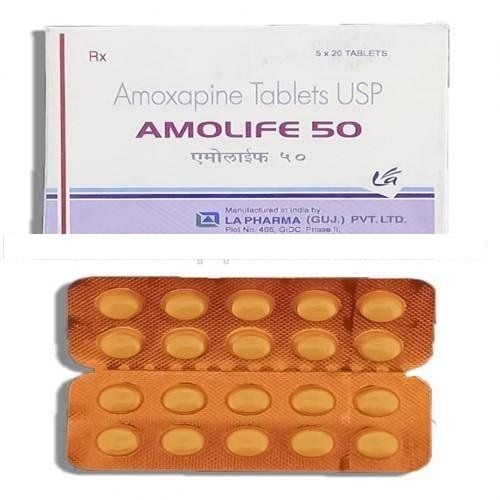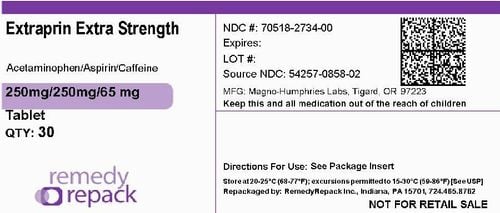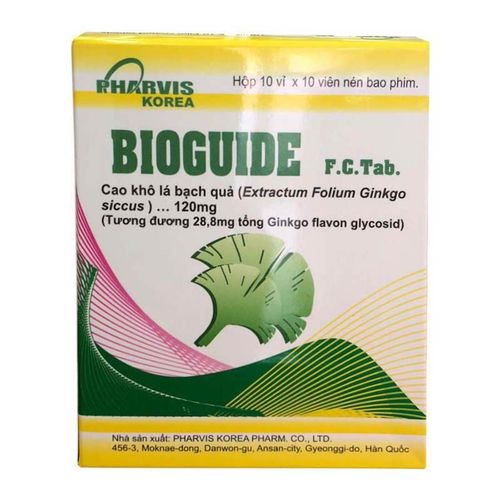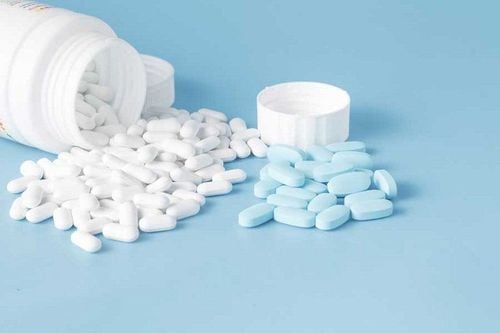This is an automatically translated article.
Reinal 10mg is indicated for the treatment of cerebral circulatory insufficiency, or brain cell oxygen depletion that causes dizziness, memory loss, sleep disorders,... To better understand Reinal 10mg , the use of the drug Reinal 10mg, let's learn more in the article below.1. What is Reinal 10mg?
Reinal's main ingredient is Flunarizine, which belongs to the class of migraine medications. The drug is prepared in the form of white tablets of 10mg content. The drug is prescribed by doctors in the following cases:Prophylaxis of migraines including classic migraine (with aura) and regular migraine (without aura), increasing the interval and reduce pain levels that are not used to treat migraines. Symptomatic treatment of vertigo, dizziness, tinnitus caused by vestibular system dysfunction. Treatment of symptoms caused by cerebral ischemia and oxygen depletion of brain cells, including: Dizziness, memory disorders, poor concentration, limited sleep,... Mechanism of action of the drug Reinal 10mg:
Active ingredient Flunarizine is a difluorine derivative of piperazine, structurally related to cinarizin. Therefore, flunarizine has similar pharmacological properties to cinnarizine, but because of its longer plasma half-life, once-daily regimens can be used.
Flunarizine's mechanism of action is based on the selective antagonism of the cell membrane calcium transport currents of red blood cells, vascular muscle cells, and brain cells.
According to experts, Flunarizine is believed to have the effect of limiting the damage to cells caused by calcium overload by inhibiting the influx of calcium into the cells in the case of too much calcium entering the cells. Therefore, flunarizine is classified as a calcium overload inhibitor. Flunarizine also inhibits smooth muscle contraction due to extracellular calcium entry. In addition, most antihistamines (H1) also have sedative and anticholinergic effects. Antihistamines can block receptors in the vestibular terminal organs and inhibit the activation of acetylcholine and histamine secretion.
2. Uses of Reinal 10mg
2.1. Pharmacodynamics of the drug Reinal 10mg
Reinal is a drug with antihistamine, calcium channel blocker and sedative activity. Flunarizine has no effect on myocardial contractility, does not increase heart rate, does not inhibit the sinoatrial or atrioventricular node, and has no antihypertensive effect.Flunarizine also shows vestibular inhibitory effects as well as anticonvulsant and antihistamine properties.
The main effect of flunarizine in migraine prevention is due to its ability to reduce and gradually reduce the frequency of migraine attacks.
2.2. Pharmacokinetics of Reinal 10mg
Absorption of the drug Reinal 10mg: Flunarizine is absorbed from the gastrointestinal tract about less than 80%, peak plasma concentrations within 2 to 4 hours after oral administration and steady state at 5 weeks. up to 6 weeks. Under conditions of reduced gastric acidity, the bioavailability of flunarizine may be lower.Distribution of the drug Reinal 10mg: Flunarizine is highly protein bound to more than 99%. The large volume of distribution, about 78 l/kg in healthy subjects and about 207 l/kg in patients with epilepsy, has a high degree of extravascular distribution. The drug rapidly crosses the blood-brain barrier, the concentration of the drug in the brain is about 10 times higher than the concentration in the blood plasma.
Metabolism of Reinal 10mg: Flunarizine is metabolised by the liver to at least 15 metabolites. The major route of metabolism is via CYP2D6.
Elimination of the drug Reinal 10mg: Flunarizine is eliminated mainly in the faeces in the form of parent drug and other metabolites. After 24 to 48 hours of oral administration, approximately 3 to 5% of the dose is excreted in the feces as parent drug and metabolites, and less than 1% is excreted in the urine.
Elimination half-life varies widely from 5 to 15 hours in most patients following single dose administration. In some individuals, flunarizine plasma concentrations can be measured (> 0.5 nanogram/ml) for prolonged periods (up to 30 days), which may be due to drug release from other tissues.
Repeat dosing: Plasma concentrations of flunarizine are reached steady state after approximately 8 weeks of repeated once daily dosing and approximately 3 times higher than single dose.
2.3. Contraindications of the drug Reinal 10mg
The patient is allergic to any ingredient of Reinal 10mg. Have symptoms of Parkinson's disease since before treatment. History of extrapyramidal symptoms. Depression or history of recurrent depressive syndrome. Precautions while using Reinal 10mgUse of Reinal 10mg may increase symptoms of extrapyramidal symptoms, depression and Parkinson's syndrome flare-ups, especially in high-risk patients such as the elderly. Therefore, it should be used with caution in these patients. Do not exceed the recommended dose of Reinal without consulting your doctor. In the process of using the drug, it is necessary to regularly and periodically monitor the patient, especially during maintenance drug therapy to detect early signs of depression, extrapyramidal and timely stop treatment. The time to onset of extrapyramidal symptoms can be long (approximately 1 year). Symptoms are generally not severe, but can persist for many months after discontinuation of drug therapy (average time to symptom resolution is about 3 months). Symptomatic improvement may not be complete and treatment with Parkinson's disease may be necessary. But in some cases, symptoms can persist despite treatment. Co-depressive syndromes should be regularly reported. These cases appear 5 to 8 months after initiation of treatment, but are generally not serious, however, in some cases, the use of antidepressants may be necessary and hospitalization may be necessary. Treatment with Reinal 10mg may cause you to gain weight. As noted, some cases of severe fatigue gradually increased when using Reinal. If this occurs, treatment should be discontinued. Keep medicine out of reach of children.
2.4. Undesirable side effects of the drug Reinal 10mg
If in the process of using the drug you have the following signs, you need to stop the drug and see a doctor, or the nearest medical facility if the user has the following symptoms: Severe allergic symptoms such as swelling of the face , lips, mouth, tongue and throat, which can cause difficulty breathing and swallowing.Some other unwanted effects
Very common : Weight gain. Common: Infections and infections: Rhinitis. Metabolism and nutrition: Increased appetite. Psychiatric: Depression, insomnia. Nervous: Drowsiness. Gastrointestinal: Constipation, epigastric pain, nausea. Musculoskeletal and Connective Tissue: Muscle pain. Genitourinary system and mammary glands: Irregular menstruation, breast pain. Body as a whole: Fatigue. Uncommon reactions: Immunological: Hypersensitivity. Psychiatric: Depressive syndrome, sleep disturbance, apathy, anxiety. Nervous system: Abnormal coordination, disorientation, coma, paresthesia, short temper, sluggishness, tinnitus, torticollis. Heart: Palpitations. Blood vessels: Low blood pressure, hot flushes. Gastrointestinal: Indigestion, intestinal obstruction, dry mouth, digestive disorders, vomiting. Skin and subcutaneous tissue: Urticaria, skin rash, increased sweating. Skeletal muscle and connective tissue: Muscle spasm, muscle contraction. Genitourinary system and mammary glands: Hemorrhage, menstrual disorders, menstrual irregularities, mammary gland enlargement, decreased libido. Systemic: Generalized edema, peripheral edema, asthenia. Reactions of unknown frequency: Neurological: Restlessness, slow movement, cogwheel sign, dyskinesia, tremor, extrapyramidal syndrome, Parkinson's, sedation. Hepatobiliary: Increased liver transaminases. Skin and subcutaneous tissue: Angioedema, pruritus, erythema. Skeletal muscle and connective tissue: Muscle stiffness. Genitourinary system and mammary glands: Abnormal milk production.
2.5. Drug interactions
Concomitant use of alcohol, sedatives and hypnotics with Reinal 10mg increases the side effect of somnolence. Reinal is not contraindicated in patients taking beta-blockers.Long-term use of flunarizine has no effect on plasma concentrations of phenytoin, carbamazepine, valproate or phenobarbital. Plasma concentrations of flunarizine are generally slightly lower in epileptic patients receiving these antiepileptic drugs than in healthy subjects receiving similar doses. The plasma protein binding of carbamazepine, valproate and phenytoin is not affected by the concomitant use of flunarizine.
Atropinic drugs Consideration when using active ingredients atropin may increase the undesirable effects of these drugs and increase the risk of urinary retention, acute glaucoma, constipation, dry mouth,...
Various atropinic drugs include the antidepressants imipramine, most H1 antihistamines, anticholinergic Parkinson's drugs, atropinic antispasmodics, disopyramide, the tranquilizers phenothiazines, and dorapine.
Sedatives Consider using drugs or active substances that may increase their sedative effect on the central nervous system and contribute to reduced vigilance. Examples include morphine derivatives (analgesics, cough suppressants and alternative therapies), tranquilizers, barbiturates, benzodiazepines, other non-benzodiazepine anxiolytics (eg, meprobamate). ), sleeping pills, sedative antidepressants (amitriptyline, doxepin, mianserin, mirtazapine, trimipramine), sedative H1 antihistamines, central nervous system antihypertensive drugs, baclofen and thalidomide.
Not recommended combinations: Alcohol/alcohol Alcohol/alcohol increases the sedative effect. Impaired levels of consciousness can be dangerous when driving and using machines. Avoid alcoholic/alcoholic beverages and drugs containing alcohol/alcohol.
Other Combinations: Topiramate The pharmacokinetics of Flunarizine is not affected by topiramate. During concomitant administration of flunarizine and topiramate 50 mg every 12 hours, flunarizine body concentrations increased by 16% in migraine patients compared with 14% in patients treated with flunarizine alone. At constant concentrations, the pharmacokinetics of topiramate are not affected by flunarizine.
3. How to use Reinal 10mg effectively
How to use: Take the drug with boiled water to cool, can break the tablet in half but should not be crushed or mixed with food or other drugs.Prophylaxis of migraine:
Initial dose: Take in the evening Patients under 65 years old: 2 tablets (10mg)/day. Patients over 65 years old: 1 tablet (5mg)/day. If during this period of treatment, if extrapyramidal symptoms, depression or unwanted side effects are detected, the doctor should be informed and treatment discontinued. If there is no significant improvement after 2 months of discontinuation of the drug, the patient may be considered a non-responder and treatment should be discontinued.
Maintenance therapy: If, after a period of initial treatment, the patient is clinically well and if maintenance therapy is required, the doctor will consider reducing the dose to 5 mg/day to the daily dose as follows: and take 2 days off per week. If preventive maintenance therapy is successful and well tolerated, treatment can be discontinued for 6 months and restarted only if relapse occurs.
Dizziness: The daily dose is the same as in the initial treatment of migraine, but in cases of vertigo, initial treatment only lasts until symptom control is achieved, and the duration is usually less. 2 months. For chronic vertigo, even if there is no significant improvement after 1 month, and 2 months for orthostatic vertigo, the patient is considered non-responder and treatment should be discontinued.
Children
Children ≥ 12 years old, especially in case of undiagnosed migraine: 5mg (1/2 tablet)/day, taken in the evening. The duration of treatment should not exceed 6 months. Children < 12 years: There is no adequate evidence on the efficacy and safety of flunarizine in this population. The use of Reinal 10mg is not recommended for children under 12 years of age. Overdose
Symptoms: Based on the pharmacological properties of the drug, somnolence and asthenia may occur. A few cases of acute overdose (as high as 600 mg orally once) have been reported, with symptoms observed being somnolence, tachycardia, and agitation. Treatment: There is no specific antidote. Within 1 hour of an overdose, gastric lavage is recommended. Activated charcoal can be used if appropriate.
Please dial HOTLINE for more information or register for an appointment HERE. Download MyVinmec app to make appointments faster and to manage your bookings easily.













